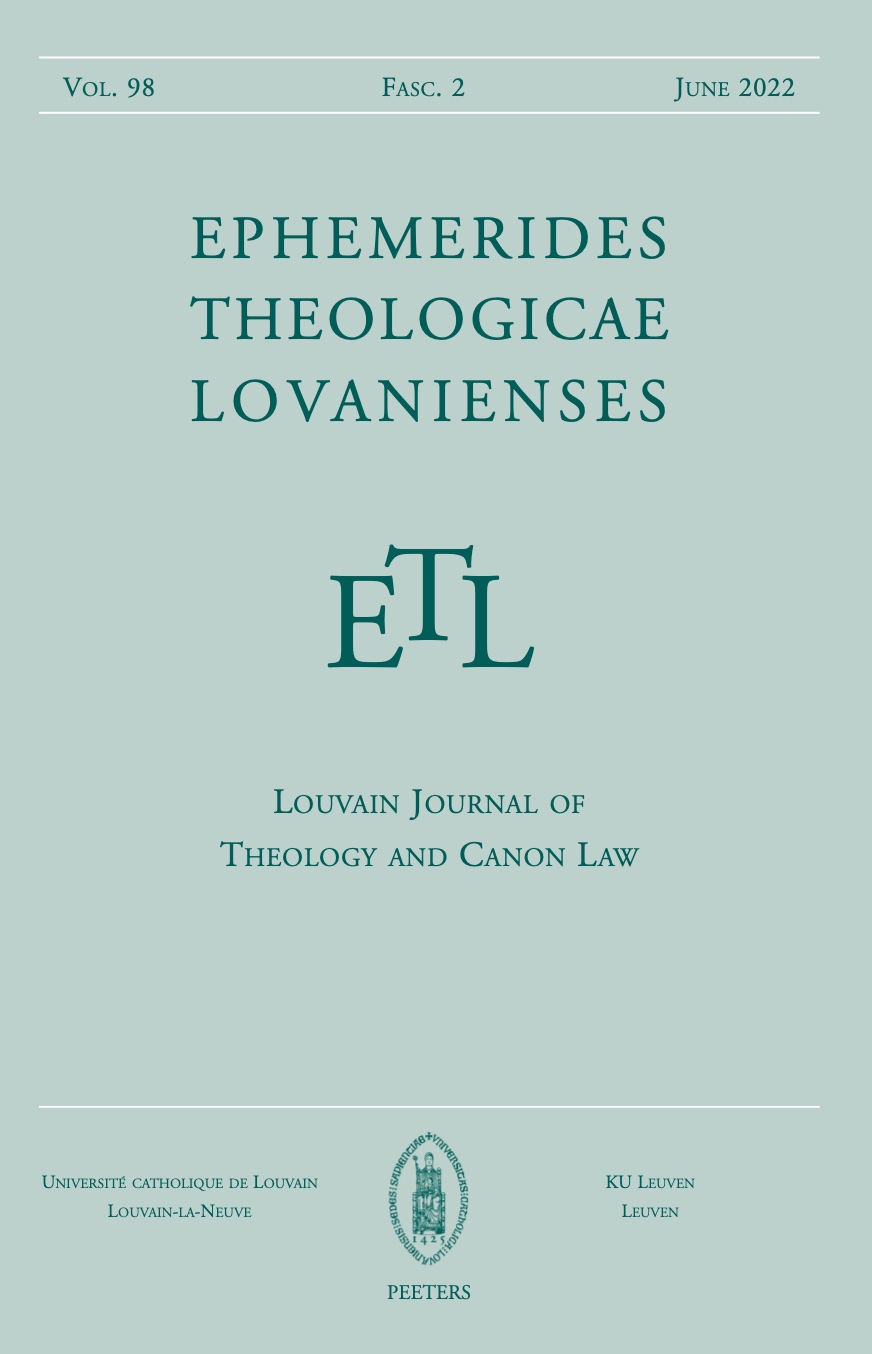 previous article in this issue previous article in this issue | next article in this issue  |

Preview first page |
Document Details : Title: The Roman Canon Subtitle: An Anaphora for the Future Author(s): GELDHOF, Joris Journal: Ephemerides Theologicae Lovanienses Volume: 100 Issue: 3-4 Date: 2024 Pages: 665-699 DOI: 10.2143/ETL.100.3.3293830 Abstract : Over against many hesitations and even downward rejections of the Roman canon, this article argues that there is a future for this unique anaphora, both in theological thinking and in liturgical practice. However, it is neither easy nor evident to clear the way for such an argumentation, for the Roman canon is loaded with heavy charges. Many scholars throughout the long twentieth century, particularly those belonging to the Liturgical Movement, considered it pastorally ineffective, theologically inappropriate, and even infertile at the spiritual level, all of this in spite of its venerable age and the massive impact it had on the shape and the understanding of the Eucharist in Western Christianity. Attention is paid subsequently to four clusters of interpretation which still determine the reputation of the Roman canon: (i) the composition of the text, which seems to consist of heterogeneous pieces and thus suffer from a lack of logic; (ii) the absence of an epiclesis, which is derived from the not explicit mentioning of the Holy Spirit; (iii) the supposedly disproportionate use of sacrificial language in the text; and (iv), as a consequence of all these evaluations, the question of whether or not to keep the Roman canon in the missal or to replace it. Based on a fine hermeneutics of the text of the anaphora as it is currently in use in Roman Catholicism, it is shown that the Roman canon has interesting things to offer for the future of the Church: due attention to the formation of the Church beyond the limits of the gathered assembly, including the saints, and a model of prayer which does not artificially disregard the notion of (self-)offering. |
|


